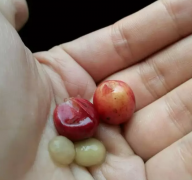How to adjust the Italian bean grinder and how to check the change of the Italian bean mill
For professional baristas, please follow the coffee workshop (Wechat official account cafe_style)
The coffee shop has to adjust the grinding degree every day, and some even adjust it once in a few hours. If there is a strict requirement for the extraction result, it should be adjusted every 5 hours, because the beans are changing at every moment. Even the pressure, temperature and humidity will have an impact on the extraction. And Italian high-pressure extraction, will expand the influence, know how to adjust, is a good barista's self-cultivation. The significance of adjusting the bean grinder the humidity and storage time of coffee beans are constantly changing, and the wear degree of bean grinder blades has also changed over time, so baristas should adjust the bean grinder regularly to ensure that the coffee powder is perfect. When the coffee bean enters the grinder, the blade in the grinder will crush the coffee bean into powder. The smaller the distance between the blade and the blade, the smaller the coffee beans will be ground into smaller particles. The finer the grinding particles are, the tighter they are, and the more difficult it is for the water to pass through, thus greatly prolonging the extraction time. On the contrary, if the distance between the blades increases, the ground particles will become rougher, the flow of water will be easier to pass through, and the extraction time will be faster. To take a simple example, like stones and fine sand, water flows much faster through stones than fine sand, because there is more space between the stones for the flow of water to pass quickly. Therefore, the correct grinding is very important, and the particle size directly affects the quality of the extraction. To judge the quality of the powder and observe the coffee powder, the high-quality coffee powder should be powdery and gravel-like. If the coffee powder is soft, like flour, it means the powder is fine. On the contrary, if the coffee powder feels tough and rough, it means the powder is too coarse. Different bean grinders have different adjustment dials, so you should check the model of the coffee grinder and read the instructions carefully to determine the direction and strength of the dial. In general, if you keep in the habit of checking the settings of the bean grinder, you only need to make very small adjustments. As long as you move the turntable within 3 mm, you can change the thickness of the powder. Although 3 mm is a very small number, the grinding time of the same coffee beans will change by 3-5 seconds. Specific steps to determine the direction of adjustment you need (finer or thicker). Make sure there are enough coffee beans in the warehouse, and the valve between the warehouse and the sharpening knife is opened so that the coffee beans can fall smoothly into the grinding area. Turn on the grinder for 10 seconds and discard the coffee powder (these are coffee powders that have not been adjusted). Use the coffee powder to make a cup of coffee to ensure the accuracy of the steps of serving, flattening and pressing powder. The traditional method of making espresso (Ristretto) uses a water / flour ratio of 1:1 (i.e. 18 grams of coffee powder is used to make 18 grams of coffee) or 1:2 (i.e. 18 grams of coffee powder is used to make 36 grams of coffee), while a regular espresso uses a water / powder ratio of 1:2 (i.e., "Normale"). Test the quality of the coffee and the extraction time. Constantly adjust the dial to make the powder reach a perfect thickness. Debugging of the electronic bean mill the debugging of the electronic bean mill is mainly aimed at two variables, the amount of powder and the degree of grinding. These two variables are mutual, and if you change one of them, the other will also change. The ordinary electronic bean grinder adjusts the grinding and pulverizing time of the bean mill according to the pre-set amount of powder (please note that the amount of powder is adjusted by the mill based on time rather than weight). If you are not satisfied with the quality of your coffee, the first thing you need to do is to determine whether there is a problem with the amount of powder or the degree of grinding. In general, the distance between the correct weight, flattened and powdered pressed powder and the outlet should be 5-6 mm. If the height of pressed powder is not in this range, you should try to adjust the powder output of the bean mill (that is, grinding and pulverizing time). When adjusting the amount of powder, the range of each adjustment should be between 0.2 and 0.3 seconds, and after each adjustment, you need to re-test the quality of the coffee. The most difficult part of adjusting the electronic bean grinder is that when you adjust the grinding parameters, the distance between the knives will change accordingly, and the change of this distance will directly affect the powder output of the bean grinder, that is, the grinding and pulverizing time. If you want to make the grinding degree finer, the distance between the sharpening knives will become closer, and there will be fewer coffee beans passing through the sharpening knife at the same time. On the contrary, the distance between sharpening knives becomes larger, and more coffee beans pass through sharpening knives at the same time. Therefore, when adjusting the electronic bean grinder, we should first grasp the relationship between the amount of powder and the degree of grinding. Thinking that these two variables change with the change of one variable, we need to constantly adjust the test in order to achieve the best results. Every small change in the bean grinder will have a great impact on the overall quality of the coffee. Therefore, as a barista, you should re-measure and adjust the bean grinder every day to ensure the perfect quality of the coffee. To master the gouache ratio, you can use a constant amount of coffee powder (for example, 18 grams) in the exercise, try to match different total coffee weight, and then compare the differences in taste, purity and mellowness. You need to decide the final gouache ratio according to your personal preference.

Important Notice :
前街咖啡 FrontStreet Coffee has moved to new addredd:
FrontStreet Coffee Address: 315,Donghua East Road,GuangZhou
Tel:020 38364473
- Prev

How much coffee is there? the flavor of decaffeinated coffee
Communication of professional baristas Please pay attention to decaffeinated coffee in the coffee workshop (official Wechat account cafe_style) is decaffeinated coffee really completely decaffeinated? many Americans are experimenting with decaffeinated coffee in the hope of getting a perfect cup of coffee that only tastes like coffee but does not stimulate the nervous system. But is decaffeinated coffee really decaffeinated? What's the difference between non-caffeinated and natural decaffeinated? Take away
- Next

Why does coffee have such a high demand for water? How will water affect the quality of coffee?
Professional barista communication please pay attention to the coffee workshop (Wechat official account cafe_style) Coffee why there is such a high demand for water? For coffee, water is an important substance second only to coffee beans. The content of water in a cup of coffee is more than 98%, so the difference of water directly determines the quality, flavor and taste of a cup of coffee. Water, there are mountain springs, sea water, lakes
Related
- Beginners will see the "Coffee pull flower" guide!
- What is the difference between ice blog purified milk and ordinary milk coffee?
- Why is the Philippines the largest producer of crops in Liberia?
- For coffee extraction, should the fine powder be retained?
- How does extracted espresso fill pressed powder? How much strength does it take to press the powder?
- How to make jasmine cold extract coffee? Is the jasmine + latte good?
- Will this little toy really make the coffee taste better? How does Lily Drip affect coffee extraction?
- Will the action of slapping the filter cup also affect coffee extraction?
- What's the difference between powder-to-water ratio and powder-to-liquid ratio?
- What is the Ethiopian local species? What does it have to do with Heirloom native species?

